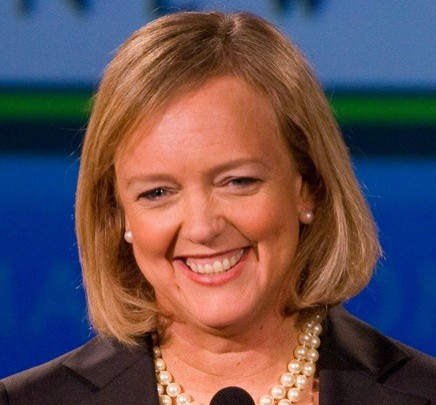HP 1st Quarter Earnings: Three Key Takeaways

Hewlett-Packard, the world's biggest computer company, reported first-quarter earnings that beat expectations as higher margin products sold more strongly than expected.
HP reported first net income of 73 cents a share, as revenue dipped 7 percent to $30 billion.
Shares of HP, which gained more than 12 percent this year and nearly 30 percent since new CEO Meg Whitman was installed in September, closed at $29.94, down 41 cents on Wednesday. After hours they fell about 2 percent to $28.42.
Analysts, guided by extremely conservative guidance from Whitman and CFO Cathie Lezjak, had estimated HP would report earnings of 87 cents a share on revenue of $30.07 billion. Indeed, HP reported operating earnings of 92 cents.
A year ago, HP reported net income of $1.17 a share, or $1.36 per share on operations, on revenue of $32.3 billion.
Here are three key items to note:
Strength of PC sales. Now that No. 3 supplier Dell has reported tepid results for the same period, HP, with a bigger share, may be in the same boat. All vendors were held back because of shortages in disk drives when supplier factories in Thailand were flooded.
HP reported PC sales fell 15 percent from the year-earlier period, with a 25 percent fall in consumer sales.
As well, the pace of orders by corporations was slow, in part because they await Microsoft's introduction of Windows 8 in the third quarter, which is expected to stimulate replacements. HP, though, has a major presence in the consumer sector.
How did HP's printers business fare? HP is the global king of the laser printing sector, vastly outselling the competition including Lexmark International, the bankrupt Eastman Kodak and Asian rivals including Canon (which supplies its printer engines), Seiko Epson and others.
Due to the Thai floods and lower-than-expected PC sales, sales of printers are expected to have declined about 9 percent, but HP may well have done better as more sales than expected came from holiday buyers.
In fact, printer revenue fell 7 percent, the company reported. Sales to consumers dipped more than for business, where HP has high-end products sold for professional printing services.
In the fourth quarter, the Imaging and Printing division accounted for 19 percent of revenue but nearly 30 percent of overall earnings. HP earns good margins on after-sales of cartridges, inks and supplies.
Guidance on any new strategy. Whitman, 56, ended up a surprise HP director only two months after losing the election for Governor of California to Democrat Jerry Brown. Nine months later, Whitman, a Republican, was the surprise CEO after HP fired Leo Apotheker.
Whitman immediately decided not to sell the PC division, something Apotheker had proposed, but then said she and Executive Chairman Ray Lane, 65, a former president of Oracle, would develop a new strategy for the company. HP usually doesn't deliver strategic reviews when It reports results, preferring to conduct analyst briefings annually.
HP didn't announce any new strategy but Whitman said the company had striven to execute better. She may elaborate more on an investor call Wednesday night. During the call, she said HP had underinvested in product development and needed to do more because the technology sector was at an inflection point.
The company also forecast second-quarter operating income between 88 cents and 91 cents, with net income ranging between 68 cents and 71 cents. That was slightly below some forecasts.
© Copyright IBTimes 2024. All rights reserved.






















